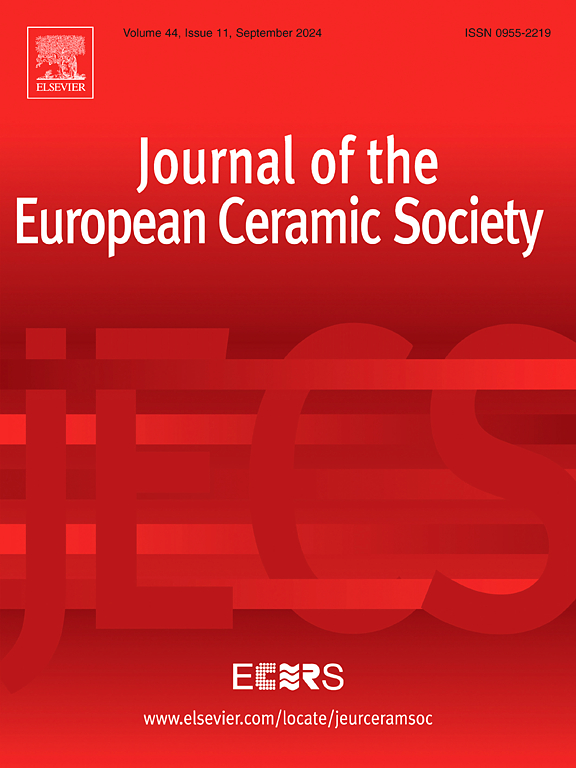Phase composition and temperature dependence of Young’s modulus and damping of natural basalt and its melt cast product
IF 6.2
2区 材料科学
Q1 MATERIALS SCIENCE, CERAMICS
Journal of The European Ceramic Society
Pub Date : 2025-05-13
DOI:10.1016/j.jeurceramsoc.2025.117529
引用次数: 0
Abstract
Natural basalt (rock) and its melt cast product (tile) are compared with respect to phase composition, density and porosity, as well as Young’s modulus and damping. Although the phase composition of the rock (pyroxene, olivine, anorthite, nepheline, spinel, < 11 % glass phase) is much more complex than that of the corresponding tile (pyroxene, olivine, < 44 % glass phase), both materials have similar Young’s moduli at room temperature (around 107 ± 5 GPa, significantly lower than the lowest predictions, 122–137 GPa). However, the temperature dependence of Young’s modulus and damping is completely different: while the rock exhibits severe microcracking during thermal cycling to 800 °C (but only in the first cycle, without significant damage accumulation in repeated cycles), the tile does not exhibit microcracking during thermal cycling at all and behaves in a completely reversible manner. Damping is much lower in the tile than in the rock.
天然玄武岩及其熔铸产物杨氏模量和阻尼的相组成和温度依赖性
天然玄武岩(岩石)和它的熔融铸造产品(瓦)在相组成、密度和孔隙率以及杨氏模量和阻尼方面进行了比较。虽然岩石的相组成(辉石、橄榄石、钙长石、霞石、尖晶石等);11 %玻璃相)比相应的瓦(辉石,橄榄石,<;44 %玻璃相),两种材料在室温下具有相似的杨氏模量(约107 ± 5 GPa,显著低于最低预测值122-137 GPa)。然而,杨氏模量和阻尼的温度依赖性是完全不同的:当岩石在热循环到800°C时表现出严重的微裂纹(但仅在第一个循环中,在重复循环中没有明显的损伤积累),瓷砖在热循环期间根本没有表现出微裂纹,并且表现为完全可逆的方式。瓦片的阻尼比岩石小得多。
本文章由计算机程序翻译,如有差异,请以英文原文为准。
求助全文
约1分钟内获得全文
求助全文
来源期刊

Journal of The European Ceramic Society
工程技术-材料科学:硅酸盐
CiteScore
10.70
自引率
12.30%
发文量
863
审稿时长
35 days
期刊介绍:
The Journal of the European Ceramic Society publishes the results of original research and reviews relating to ceramic materials. Papers of either an experimental or theoretical character will be welcomed on a fully international basis. The emphasis is on novel generic science concerning the relationships between processing, microstructure and properties of polycrystalline ceramics consolidated at high temperature. Papers may relate to any of the conventional categories of ceramic: structural, functional, traditional or composite. The central objective is to sustain a high standard of research quality by means of appropriate reviewing procedures.
 求助内容:
求助内容: 应助结果提醒方式:
应助结果提醒方式:


